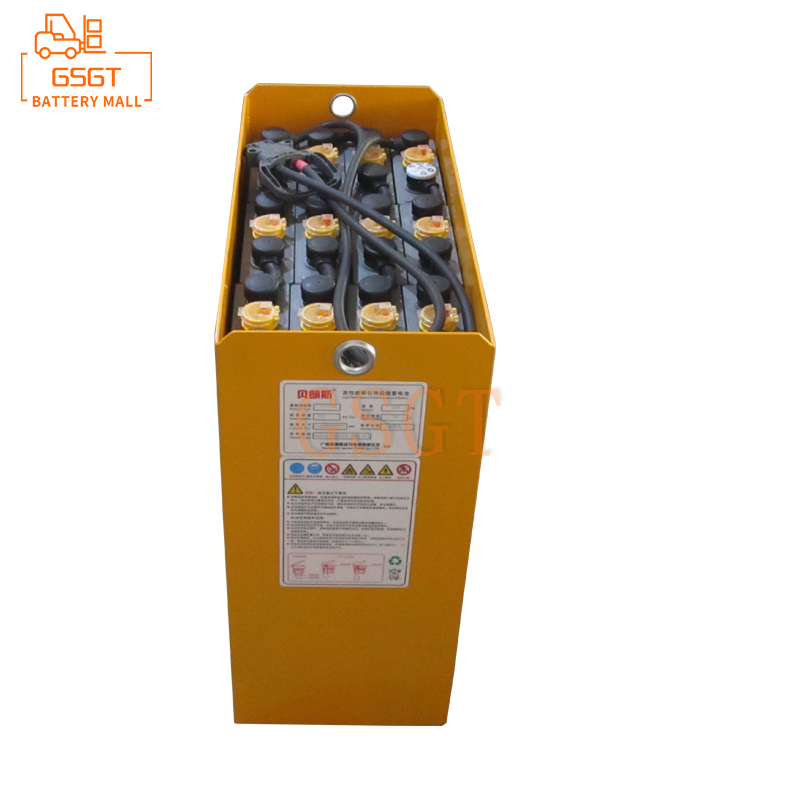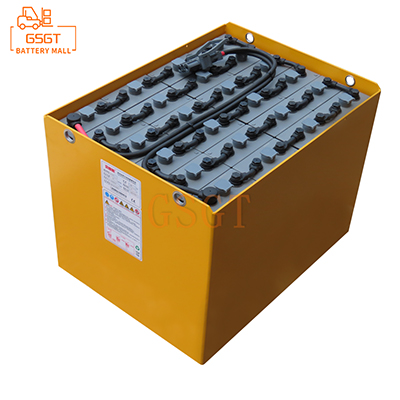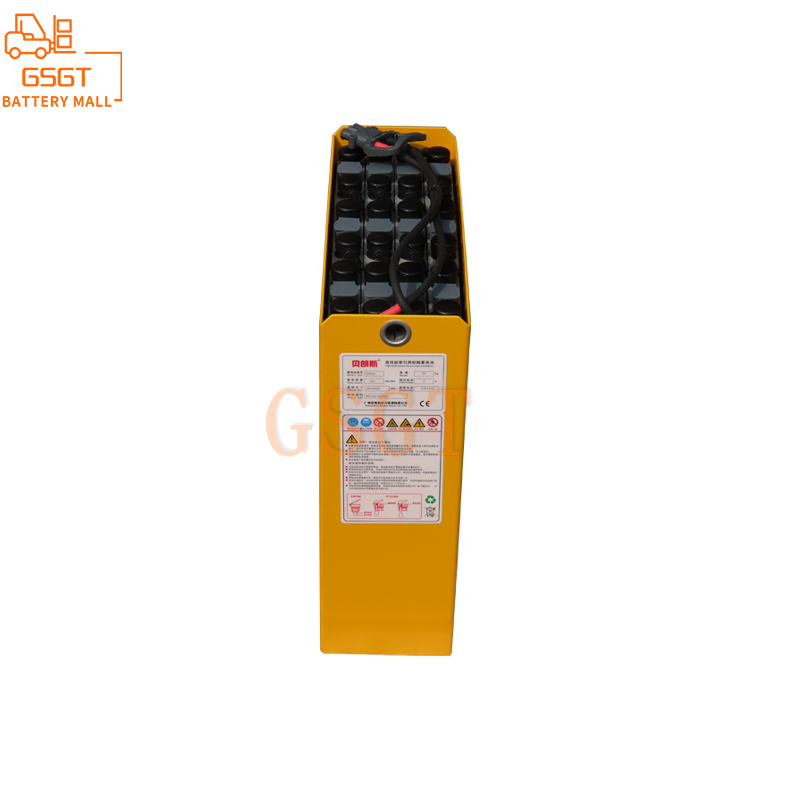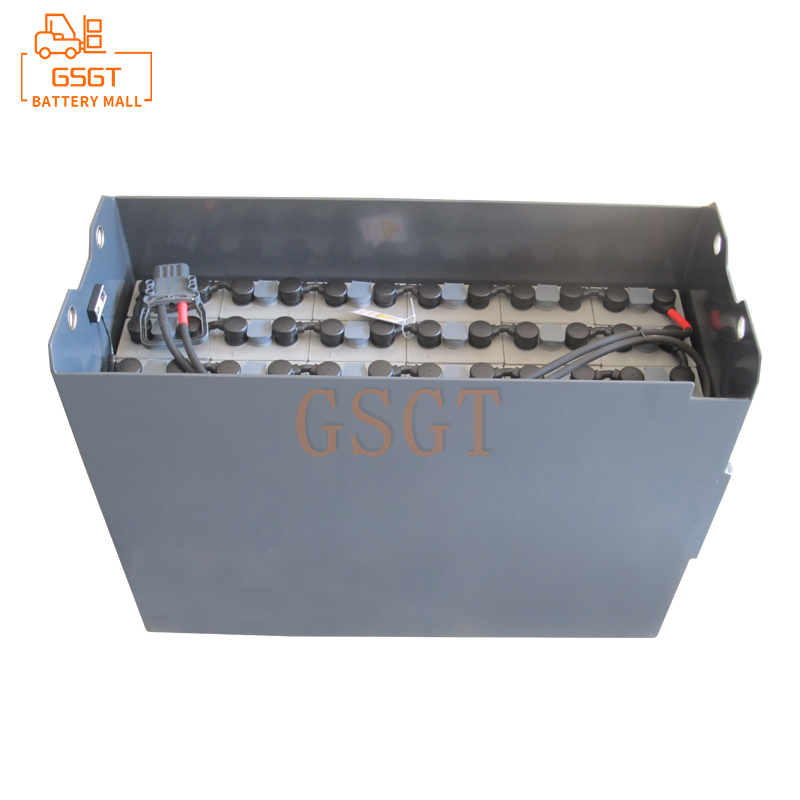Time:2025-06-07 13:15:18
Browse:602
Introduction
Forklifts play a crucial role in modern logistics, warehousing and other industries. As an important power source for forklifts, the performance and lifespan of lead-acid batteries directly affect the utilization efficiency and operating costs of forklifts. In the maintenance of lead-acid batteries, water replenishment is a crucial operation. Correctly grasping the timing of water replenishment and following the requirements of the electrolyte are of vital importance for maintaining the battery's good performance and extending its service life. This article will delve into the knowledge related to the timing and requirements for replenishing lead-acid batteries in forklifts, providing valuable references for forklift users and maintenance personnel.
1. Reasons for Water loss in Forklift Lead-acid Batteries
Reasons for water loss
Electrolytic water reaction: During the charging process, especially at the end of charging, the electrochemical reaction inside the battery is intense. At this point, the water in the electrolyte will undergo electrolysis under the action of the current, decomposing into hydrogen and oxygen and escaping from the battery. Specifically, the reaction that occurs on the positive plate is 2H₂O - 4e⁻ = O₂↑ + 4H⁺, generating oxygen. The reaction that occurs on the negative plate is 2H⁺ + 2e⁻ = H₂↑, generating hydrogen gas. This phenomenon of electrolyzing water will lead to a large consumption of water inside the battery.
Evaporation: During the daily use of forklifts, the battery generates heat due to charging and discharging, and the working environment temperature also has an impact on the battery. When the battery temperature rises, the evaporation rate of water in the electrolyte increases. Especially in high-temperature environments or after prolonged continuous use of forklifts, the internal temperature of the battery rises significantly, and water evaporation becomes more obvious, further exacerbating the battery's water loss situation.
2. Judgment on the Timing of Refilling Lead-acid Batteries in Forklifts
(1) It can be judged based on the usage time and the number of charge and discharge cycles
Under normal circumstances, if the lead-acid battery of a forklift is not equipped with an automatic liquid replenishment system, it is recommended to check the electrolyte level once a month and consider whether water replenishment is needed. For forklift batteries that are frequently used and have a large number of charge and discharge cycles, the water replenishment cycle should be appropriately shortened. Frequent charging and discharging will accelerate the electrochemical reactions inside the battery, causing water to be consumed more quickly. For forklifts with lower usage frequencies, if they are used no more than 2 to 3 times a week, the inspection frequency can be appropriately extended to once every 1.5 to 2 months. However, it is also necessary to closely monitor the battery usage condition.
(2) Judged by observing the liquid level of the electrolyte
Liquid level standard: Under normal circumstances, the liquid level of the electrolyte should be 10-15 millimeters higher than that of the plates to ensure that the plates are completely immersed in the electrolyte, so that the active substances on the plates can fully contact the electrolyte and the electrochemical reaction can proceed smoothly. Some battery casings are marked with two red lines as liquid level indicators. At this time, the electrolyte must not exceed the upper red line. If it does, it may overflow due to the expansion of the electrolyte during charging, which not only causes waste of the electrolyte but also may corrode the battery casing and surrounding equipment.
Inspection method: Open the battery's liquid injection hole cover, insert a clean glass tube or a dedicated liquid level measurement tool into the liquid injection hole, and measure the height of the electrolyte liquid level. If the liquid level is found to be lower than the standard requirement, water replenishment operation is required immediately. It should be noted that when checking the liquid level, it should be done when the battery is in a static state. Do not measure it right after charging or discharging, as the liquid level inside the battery may be inaccurate due to factors such as gases produced by electrochemical reactions at this time.
(3) Judge based on changes in battery performance
Capacity decline: When a forklift's driving range is significantly reduced under normal usage conditions, for instance, a forklift that could operate for 8 hours on a full charge can now only work for 5 to 6 hours. After ruling out other factors that might affect the driving range, it is very likely that the battery capacity has decreased. When the battery capacity drops to a certain extent, it might be due to water loss in the battery, which causes changes in the concentration of the electrolyte and affects the normal progress of the electrochemical reaction. At this point, it is necessary to check whether the battery needs water replenishment and further determine the battery's health condition in combination with other methods.
Abnormal charging: During the charging process, if you notice a significant reduction in battery charging time, such as the situation where it originally took 8 to 10 hours to fully charge but now shows full charge in 6 to 7 hours, or if the battery gets too hot during charging and a large number of bubbles appear prematurely, all these abnormal phenomena may be related to battery water loss. When a battery loses water, the concentration of the electrolyte changes, the internal resistance increases, and the charging acceptance capacity decreases, making it prone to the above-mentioned abnormal charging situations. At this time, the electrolyte level should be checked in time and water replenishment should be considered.
3. Precautions for Water replenishment Operations
Key points of water replenishment operation
Use appropriate water replenishment tools: Clean non-metallic tools such as plastic syringes and plastic funnels should be selected for water replenishment operations. Avoid using metal tools as metals may be corroded in acidic electrolytes. Once metal ions enter the electrolyte, they can cause problems such as battery self-discharge, affecting battery performance.
Control the amount of water replenishment: When replenishing water, distilled water should be added slowly, and the liquid level of the electrolyte should be observed continuously until the standard liquid level height is reached. Do not add too much water at one time to avoid the electrolyte level being too high and the electrolyte overflowing during charging. For batteries of different capacities, the amount of water to be replenished also varies. Generally, you can refer to the recommended amount of water to be replenished provided by the battery manufacturer, or based on previous maintenance experience, figure out the appropriate amount of water to be replenished for the battery through multiple replenishment processes.
Post-water replenishment treatment: After the water replenishment is completed, the battery's liquid injection hole cover should be tightened to prevent dust, impurities, etc. from entering the battery interior. At the same time, the surface of the battery can be cleaned, and any electrolyte that may splash out can be wiped off to prevent the electrolyte from corroding the battery casing and surrounding equipment. In addition, if conditions permit, a small current equalization charge can be performed on the battery after water replenishment. This helps the newly added water to mix thoroughly with the original electrolyte, making the density of the electrolyte between each cell of the battery more uniform and improving the battery performance.
4. Conclusion
Judging the timing of water replenishment for forklift lead-acid batteries and following the electrolyte requirements are key links in battery maintenance. By accurately grasping the timing of water replenishment based on usage time, electrolyte level and battery performance changes, strictly following the requirements of electrolyte composition, density and purity, and paying attention to key points in water replenishment and related operations, it is possible to effectively maintain the good performance of the battery, extend its service life, reduce the operating costs of forklifts and improve work efficiency. Forklift users and maintenance personnel should attach importance to the knowledge and skills in these aspects, apply them to actual work, ensure that the lead-acid batteries of forklifts are always in the best working condition, and provide reliable guarantees for the stable operation of forklifts. With the continuous development of technology, more advanced battery maintenance methods and products may emerge in the future. However, the current fundamental principles and methods for rehydration and electrolyte management of lead-acid batteries will still have significant application value for a considerable period of time.

$1105

$3405

$1270

$2040

MESSAGE
Professional And Efficient
Security
Affordable Price
Professional Services